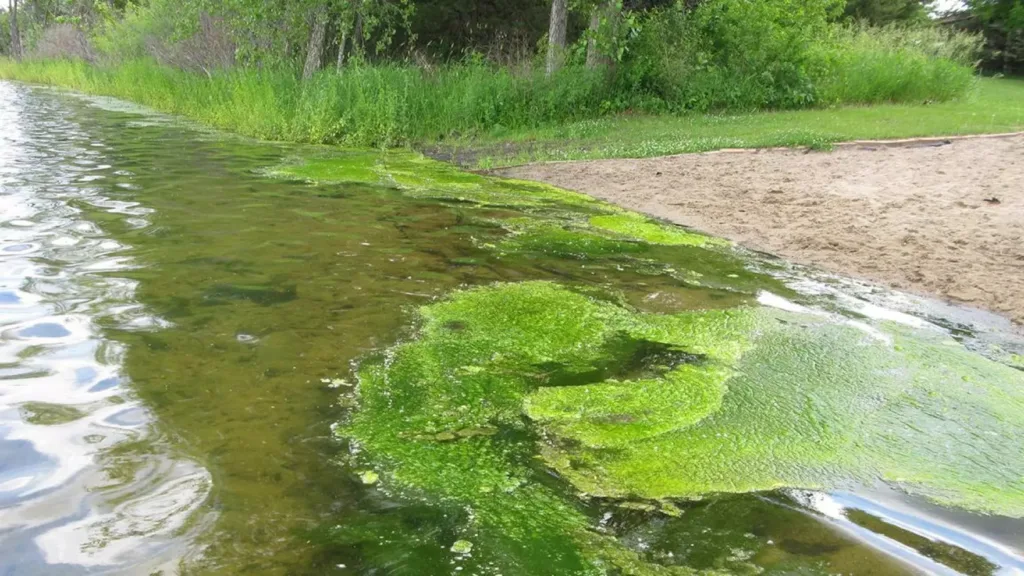How This Ancient Super-Organism Can Reverse Aging
One of the oldest and toughest organisms on Earth, cyanobacteria, has caught the attention of scientists in their never-ending search for the fountain of youth. These microscopic powerhouses, also referred to as blue-green algae, are revolutionizing our understanding of aging and potential ways to slow it down.

Cyanobacteria: A Primer
Cyanobacteria, though often referred to as algae, are in fact a type of bacteria. They are photosynthetic, meaning they convert light energy into chemical energy, much like plants. This process is not only crucial for the survival of cyanobacteria but also plays a significant role in maintaining the oxygen levels of our planet.
A Potent Anti-Aging Ally
Recent studies have unveiled the remarkable potential of cyanobacteria in the realm of anti-aging. Extracts from these microorganisms have been found to exhibit powerful anti-aging properties. Aqueous extracts excel at scavenging free radicals – rogue molecules that contribute to aging, while acetonic extracts are adept at preserving the integrity of the dermal matrix, the component of our skin that ensures its elasticity and firmness.
The Nutritional Powerhouse
Cyanobacteria, or blue-green algae, are not new to the human diet. For centuries, they have been consumed for their medicinal and nutritional values. They are a rich source of phycocyanin, carotenoids, γ-linolenic acid, fibers, and plant sterols, all of which contribute to optimal health.
Cardiovascular and Liver Health
Remarkably, certain species of blue-green algae have been shown to lower total cholesterol and triglyceride levels. This is achieved through the modulation of intestinal cholesterol absorption and the expression of genes related to fat production in the liver. Their ability to reduce inflammation and inhibit lipid peroxidation further bolsters their profile as a potent agent against cardiovascular disease and nonalcoholic fatty liver disease.
Antioxidant Properties
Blue-green algae’s efficacy in scavenging free radicals makes them a formidable force against oxidative stress. By inhibiting lipid peroxidation, they protect the body from the damaging effects of oxidative stress, which is a key contributor to aging.
Innovative Biomolecules
Cyanobacteria are a treasure trove of biomolecules, including Scytonemin, Mycosporine-like Amino Acids (MAAs), and Phycobiliproteins (PBPs). These compounds show immense promise in formulations aimed at antioxidant, anti-aging, and neuroprotective benefits. Additionally, the secondary metabolites of cyanobacteria could be the key to overcoming hyperpigmentation, loss of skin density, and the harmful effects of UV radiation.
The Direction Ahead
The exploration of cyanobacteria in the field of anti-aging is still in its infancy. However, the initial findings are nothing short of promising. As we delve deeper into the potential of these ancient organisms, we may well be on our way to unlocking the secrets of reversing aging.
The journey towards understanding and harnessing the power of cyanobacteria for health and longevity continues. With each discovery, we edge closer to a future where the aging process can be slowed, or perhaps even reversed, through the wisdom of the natural world.
This glimpse into the potential of cyanobacteria for reverse aging underscores the intersection of nature, science, and the pursuit of wellness. As research progresses, the promise held by these ancient organisms illuminates a path towards a healthier, more vibrant future.
References:
Torres-Duran PV. Ferreira-Hermosillo A. Juarez-Oropeza MA. Antihyperlipemic and antihypertensive effects of Spirulina maxima in an open sample of Mexican population: a preliminary report. Lipids Health Dis. 2007;6:33. [PMC free article] [PubMed] [Google Scholar]
Rasmussen HE. Blobaum KR. Jesch ED. Ku CS. Park YK. Lu F. Carr TP. Lee JY. Hypocholesterolemic effect of Nostoc commune var. sphaeroides Kutzing, an edible blue-green alga. Eur J Nutr. 2009;48:387–394. [PubMed] [Google Scholar]
Hori K. Ishibashi G. Okita T. Hypocholesterolemic effect of blue-green alga, ishikurage (Nostoc commune) in rats fed atherogenic diet. Plant Foods Hum Nutr. 1994;45:63–70. [PubMed] [Google Scholar]
Ciferri O. Spirulina, the edible microorganism. Microbiol Rev. 1983;47:551–578. [PMC free article] [PubMed] [Google Scholar]
Spolaore P. Joannis-Cassan C. Duran E. Isambert A. Commercial applications of microalgae. J Biosci Bioeng. 2006;101:87–96. [PubMed] [Google Scholar]
